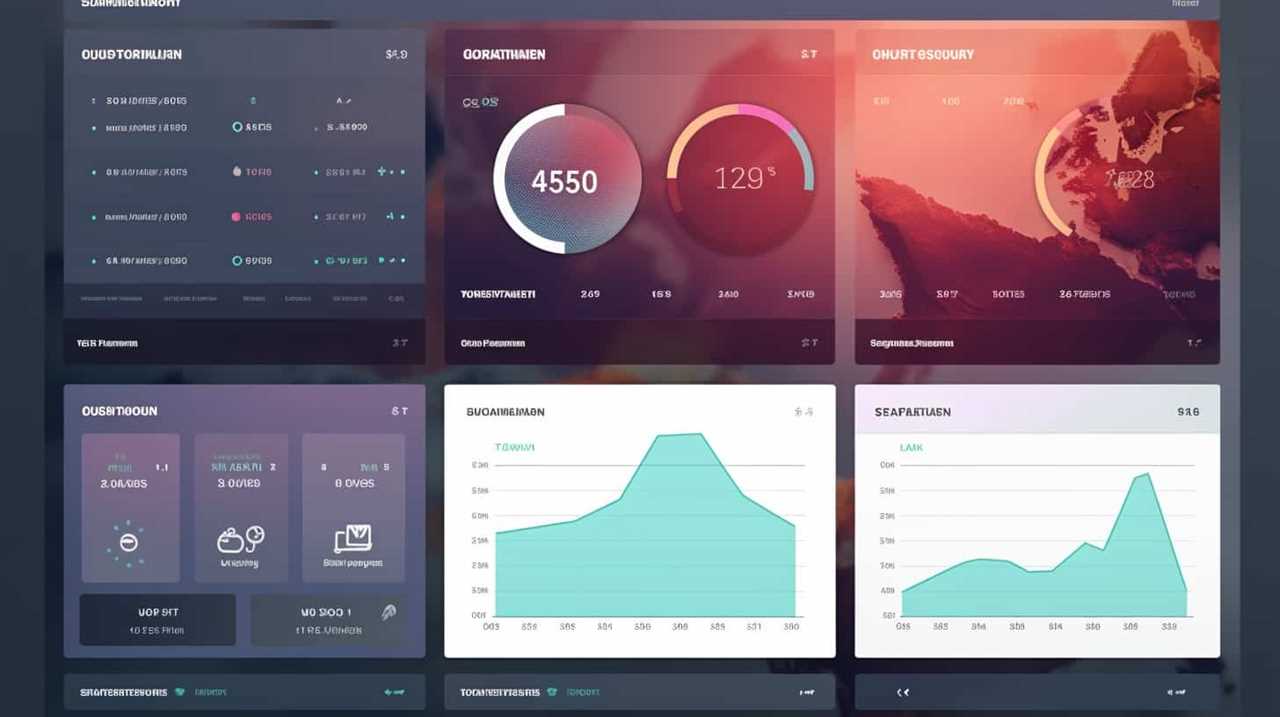Tired of grappling with the complexities of technical SEO? Stress less! Our comprehensive guide has arrived to help you tackle those pesky problems and enhance your site’s performance.
From identifying crawl errors to optimizing website speed, we’ve got your back. Say goodbye to broken links and hello to an improved website structure. And don’t worry, we’ll even show you how to implement a proper URL structure.
Get ready to master technical SEO like a pro!
Key Takeaways
- Identifying and fixing crawl errors is crucial for improving website visibility and search engine rankings.
- Optimizing website speed through image compression, caching, and appropriate cache headers enhances user experience and search engine rankings.
- Promptly fixing broken links and regularly monitoring for them helps maintain a healthy website.
- Improving website structure and implementing proper URL structure are important for SEO performance and content organization.
Identify Crawl Errors
We can identify crawl errors by checking our website’s server logs or using online tools. Analyzing error logs is an effective way to spot any issues that may be hindering the crawling and indexing of our website by search engines. By carefully reviewing the server logs, we can pinpoint any errors or access issues that are causing problems.

Additionally, implementing XML sitemaps can help us identify crawl errors more efficiently. XML sitemaps provide search engines with a structured map of our website’s content and help them navigate and understand our site better. By regularly monitoring and updating our XML sitemaps, we can ensure that search engines can crawl and index our website without encountering any errors.
Optimize Website Speed
To optimize website speed, we should focus on minimizing page load times. Two key strategies for achieving this are minimizing image sizes and enabling caching. By reducing the size of images on our website, we can significantly improve load times. This can be done by compressing images without sacrificing quality or by using modern file formats like WebP. Enabling caching allows the browser to store certain website assets locally, reducing the need to fetch them from the server every time a user visits the site. This can be achieved by setting appropriate cache headers or using a caching plugin. By implementing these techniques, we can greatly enhance the speed and performance of our website.
| Strategy | Description |
|---|---|
| Minimize image sizes | Compress and optimize images to reduce file size |
| Enable caching | Set cache headers or use a caching plugin to store assets locally |
Now, let’s move on to the next topic: fixing broken links.
Fix Broken Links
One way to address technical SEO issues is by resolving broken links. Broken links occur when a URL leads to a page that no longer exists or has been moved. Such links can negatively impact user experience and search engine rankings.

To detect broken links on your website, you can use various tools like Google Search Console, Screaming Frog, or Ahrefs. Once identified, it’s essential to fix these broken links promptly.
To prevent broken links in the first place, consider implementing strategies like regularly monitoring your website for broken links, redirecting URLs when necessary, and updating internal links when pages are moved or deleted.
Improve Website Structure
To further enhance our website’s technical SEO, let’s delve into improving the structure of our site. A well-structured website not only improves user experience but also helps search engines understand and index our content more effectively. Here are three key steps we can take to improve our website structure:
- Organize content hierarchically: Create a logical hierarchy by categorizing content into main sections, sub-sections, and pages. This makes it easier for users and search engines to navigate through our site.
- Optimize internal linking: Use relevant anchor text and strategically link between pages to guide users and search engines to important content. This also helps distribute authority throughout our site.
- Implement structured data: By adding structured data markup, we provide search engines with additional context about our content, improving its visibility in search results and enhancing the user experience.
Implement Proper URL Structure
Now let’s focus on implementing a proper URL structure to optimize our technical SEO and improve our website’s overall performance. When it comes to URL structure, keyword research plays a crucial role. By incorporating relevant keywords into our URLs, we can improve our website’s visibility in search engine results pages and attract more targeted traffic. It is important to choose keywords that accurately represent the content of the page and align with our target audience’s search intent. Additionally, implementing canonical tags in our URL structure is another best practice to consider. Canonical tags help consolidate duplicate content and indicate the preferred version of a page to search engines, ensuring that our website doesn’t suffer from duplicate content issues. By following these best practices, we can enhance our website’s SEO performance and provide a seamless user experience.

| Importance of Keyword Research in URL Structure | Best Practices for Implementing Canonical Tags |
|---|---|
| – Improves website’s visibility in search results | – Consolidates duplicate content |
| – Attracts targeted traffic | – Indicates preferred page version |
| – Aligns with user search intent | – Prevents duplicate content issues |
Frequently Asked Questions
How Do I Improve My Website’s Mobile Optimization?
To improve our website’s mobile optimization, we need to focus on two key factors: improving website speed and increasing mobile responsiveness. By optimizing these areas, we can ensure a seamless experience for our mobile users.
What Are the Best Practices for Optimizing Images on My Website for Seo?
To optimize images for SEO, we recommend focusing on image compression and alt text optimization. These practices can enhance page load speed and improve accessibility for search engines, resulting in better rankings and user experience.
How Can I Effectively Use XML Sitemaps to Improve My Website’s Crawlability?
To effectively use XML sitemaps for improved crawlability, we recommend using structured data and optimizing website speed. By incorporating these strategies, we can ensure search engines easily navigate and index our site.
What Are Some Common SEO Mistakes to Avoid When Optimizing a Website?
When optimizing a website, it’s crucial to avoid common SEO mistakes. Proper keyword research and on-page optimization are essential. We’ll share actionable tips to help you avoid these pitfalls and achieve mastery in optimizing your website.

How Can I Optimize My Website’s Meta Tags and Descriptions for Better Search Engine Visibility?
Craft compelling meta tags and descriptions for better search engine visibility with these top tips. Also, optimize your website for user experience to improve SEO. It’s essential to prioritize both aspects for optimal results.
Conclusion
In conclusion, fixing technical SEO issues is crucial for improving website performance and visibility. By identifying crawl errors, optimizing website speed, fixing broken links, improving website structure, and implementing proper URL structure, you can enhance your website’s search engine rankings and user experience.
Did you know that websites that load within 2 seconds have an average bounce rate of 9%, while those that take 5 seconds or more have a bounce rate of 38%? Taking these steps will help you achieve better SEO results and retain more visitors.









